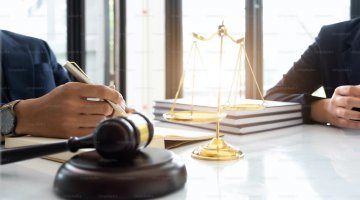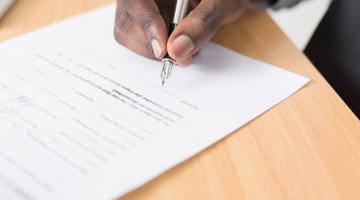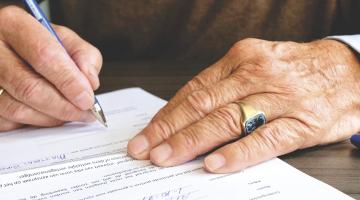Legal Steps for Personal Injury Cases Involving Multiple Defendants
Navigating a personal injury case with multiple defendants in Seattle can be complex, requiring a strategic approach to ensure a fair outcome. Defendants may include individuals, businesses, or organizations, each bearing varying levels of responsibility. Filing the claim starts with gathering comprehensive evidence, such as photographs, medical records, and witness statements, and accurately identifying all parties involved. The principle of joint and several liability often applies, allowing plaintiffs to seek compensation from any defendant, irrespective of their degree of fault.
Collaborating with a personal injury lawyer from Premier Law Group ensures a solid legal strategy. Legal experts help assess comparative negligence, negotiate settlements, and manage insurance complexities to maximize compensation. In cases that proceed to trial, they present compelling arguments to hold all liable parties accountable. With professional guidance, plaintiffs can navigate the intricacies of multi-defendant cases confidently and work toward achieving justice.
Exploring the Concept of Defendants
In cases of personal injury incidents, it is common to have multiple individuals held accountable for the harm caused. These individuals, referred to as defendants, can range from drivers to businesses and other organizations. It is crucial to pinpoint all parties involved as it can greatly affect the ruling of the case. Each defendant may bear varying levels of responsibility, which directly affects the compensation awarded.
Submitting the Claim
Starting an injury claim involves collecting details about the accident situation, such as capturing all evidence, such as pictures and medical documents, as well as accounts from witnesses involved in the incident. To submit the claim accurately, you must fill out paperwork for the legal body that details the type of injury sustained and identifies the parties deemed liable for it. Precision during this stage is crucial since mistakes could potentially cause delays in the process.
Joint and Several Liability
In cases involving multiple defendants, the notion of joint and several liability can come into play. This principle enables a plaintiff to seek damages from any defendant regardless of their individual level of responsibility. However, not all regions follow this rule uniformly. Knowing how liability is divided in a locality can greatly impact the approach taken when pursuing a case.
Crafting a Compelling Argument
Building an argument involves showcasing the carelessness or wrongdoing of every accused individual involved in the situation at hand. This procedure entails investigating and gathering proof that connects each person to the event. Law experts frequently team up with specialists who can offer witness accounts or evaluations to reinforce the argument. A planned strategy can boost the chances of achieving a result.
Navigating Through Settlements
In some cases, people may opt to resolve disputes outside of court. This approach can lead to time and cost savings while also guaranteeing compensation for all involved. Throughout negotiations, the responsibilities and liabilities of each party are carefully examined to achieve an agreement. Effective bargaining skills can often lead to a resolution without the necessity of legal proceedings.
Legal Proceedings
If settlement attempts are unsuccessful and a resolution is not reached out of court, the case might progress to trial, where a judge and/or jury carefully review the evidence to establish responsibility and appropriate compensation amounts for damages incurred by the parties involved in the dispute.
Each party being sued will have their representatives who will advocate on their behalf by presenting arguments to support their clients' positions and protect their interests during the formal court proceedings. Legal trials can be prolonged affairs that demand patience and extensive groundwork from all parties engaged in the litigation process.
Exploring the Concept of Comparative Negligence
In many regions of law enforcement systems, legal proceedings are impacted by the idea of fault, which can play a significant role in determining the final verdict of a case. Comparative fault takes into account the plaintiff's involvement in an incident and how it could impact the compensation they receive. If the plaintiff is found to bear some responsibility for their injury, their compensation might be adjusted accordingly. Understanding this concept is crucial for managing one's expectations and preparing for the process effectively.
Getting Legal Counsel
It's essential to hire a lawyer when dealing with personal injury cases to navigate the legal intricacies effectively and increase the likelihood of success. A lawyer ensures compliance with legal requirements and provides valuable advice that boosts confidence in seeking justice.
Factors to Keep in Mind Regarding Insurance
Insurance firms frequently play a role in injury lawsuits involving numerous defendants. Insurers' approaches to claims can vary based on their policies and the defendants they represent. Knowing how insurance coverage is applicable in scenarios is important. Legal experts are instrumental in interpreting policies and engaging in negotiations with insurers to achieve results.
Final Thoughts
When dealing with injury cases involving defendants, there are specific challenges that require a thoughtful and well-informed strategy to effectively navigate the legal complexities involved, such as initiating claims and managing court processes. Legal advice from professionals, along with assessing liability and negotiating settlements, can help individuals seek outcomes. It's important to understand that every case is unique, and seeking guidance from specialists can offer support based on situations.
More to Read:
Previous Posts:






